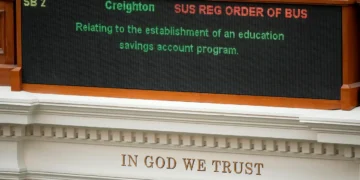Dec 19, 2024 Story by: Editor
In 2009, Shirin Bryant witnessed an all-white jury acquitting a white police detective who had fatally shot her 18-year-old brother, Jashon, in Hartford’s north end.
The detective, Robert Lawlor, claimed he had seen the Black teenager holding a gun while standing outside a car, but no firearm was found at the scene.
Following nearly two days of deliberation, the jury in Hartford chose not to convict the officer on manslaughter and assault charges. This decision raised concerns about the lack of racial diversity among the jurors.
Now, over 15 years later, Bryant says the racial composition of that jury continues to shape her perception of Connecticut’s judicial system.
“I have no trust in the judicial system,” she said. “I don’t feel like everyone gets a fair chance. My brother’s case alone has made me think differently. I feel the judicial system failed us.”
Connecticut’s judicial branch has since sought to address such concerns by revamping its jury selection process in recent years.
Efforts to Address Inequities
Since 2020, state officials have broadened the eligibility criteria for jury service, revamped the notifications sent to potential jurors, and increased jury summons in Connecticut’s larger cities to create a pool that better mirrors the state’s diversity.
However, new data gathered from more than 44,000 individuals who reported for jury service between November 2023 and May 2024 shows that racial disparities persist in several judicial districts.
For example, in the Stamford-Norwalk Judicial District, Black residents represent over 12% of the eligible jury population but account for less than 7% of those reporting for service. Similarly, in the Windham Judicial District, Hispanic individuals comprise nearly 12% of the eligible population but only around 7% of prospective jurors. In Hartford, the Hispanic population exceeds 17% but makes up just 10% of the jury pool.
The Importance of Jury Representation
These discrepancies, while not preventing Black and Hispanic individuals from being selected for most juries, can undermine public trust and hinder the formation of racially diverse juries. Research indicates that diverse juries engage in more thorough deliberations and consider evidence more comprehensively.
Richard Robinson, Connecticut’s first Black chief justice, emphasized the critical role of public confidence in the courts. “If people either feel the system is failing them or the system actually is failing them, you’ve got a problem and you need to address that,” said Robinson, who initiated a review of the jury selection process.
Nina Chernoff, a City University of New York law professor specializing in jury diversity, underscored the democratic importance of representative juries. “The way we maintain a democratic judicial system is to have members of the community weighing in,” Chernoff said. “To the extent that a jury fails to reflect the community, it’s unable to serve its core purpose.”
A Personal Perspective
For Bryant, whose cousin was also severely injured in the 2009 incident, the absence of neighborhood representation on the jury remains a source of frustration. She feels the all-white suburban jury lacked understanding of her community’s experiences.
“Here we were in the inner city, and we have a jury that may all be from the suburbs,” Bryant said. “Honestly, I feel like Black people as a whole don’t get the same equality. I feel my brother didn’t get a fair chance.”
She added, “Not a day goes by that I don’t think about my brother. And I never forgot the trial. I never forgot walking in and seeing an all-white jury.” Source: ct mirror

















